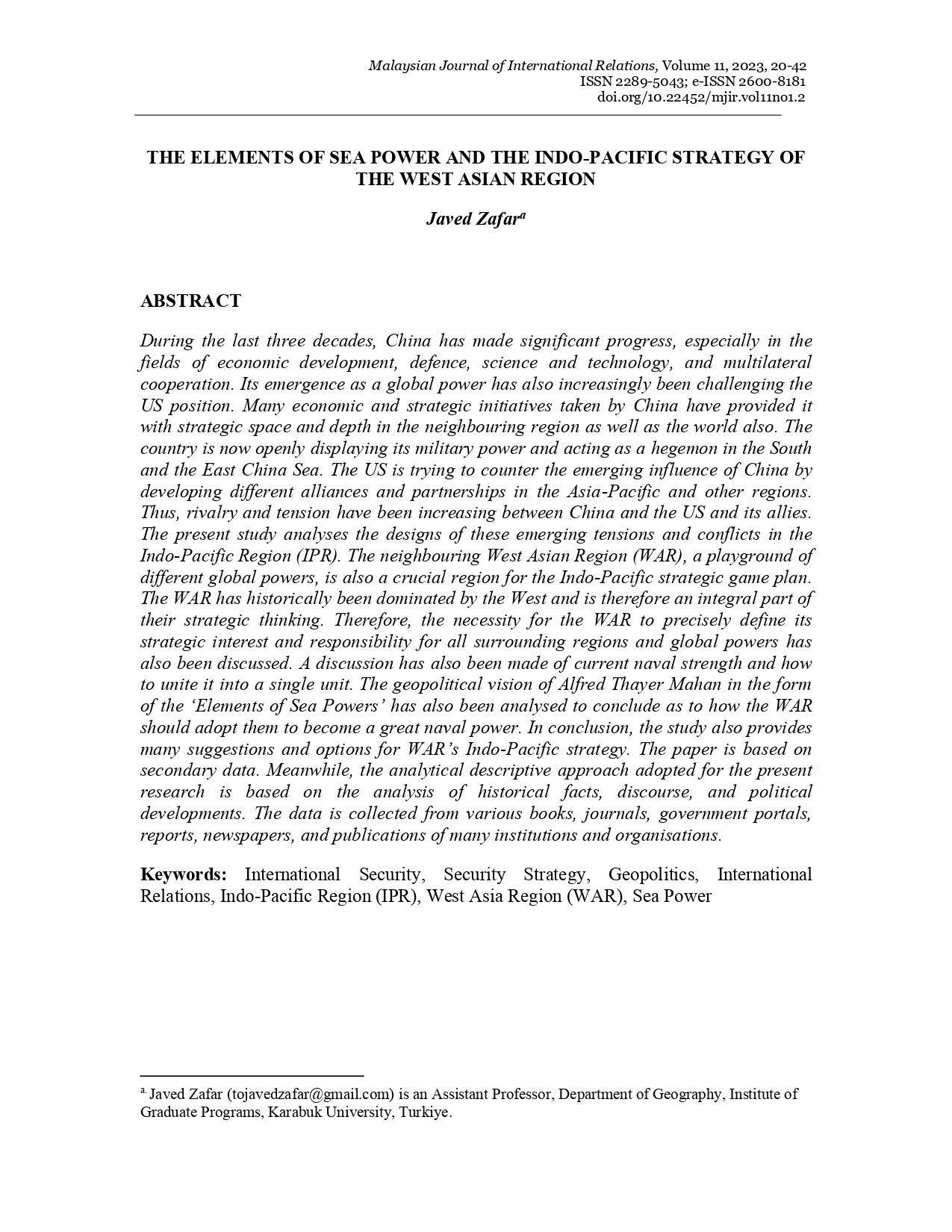The Elements of Sea Power and the Indo-Pacific Strategy of the West Asian Region
Main Article Content
Abstract
During the last three decades, China has made significant progress, especially in the fields of economic development, defence, science and technology, and multilateral cooperation. Its emergence as a global power has also increasingly been challenging the US position. Many economic and strategic initiatives taken by China have provided it with strategic space and depth in the neighbouring region as well as the world also. The country is now openly displaying its military power and acting as a hegemon in the South and the East China Sea. The US is trying to counter the emerging influence of China by developing different alliances and partnerships in the Asia-Pacific and other regions. Thus, rivalry and tension have been increasing between China and the US and its allies. The present study analyses the designs of these emerging tensions and conflicts in the Indo-Pacific Region (IPR). The neighbouring West Asian Region (WAR), a playground of different global powers, is also a crucial region for the Indo-Pacific strategic game plan. The WAR has historically been dominated by the West and is therefore an integral part of their strategic thinking. Therefore, the necessity for the WAR to precisely define its strategic interest and responsibility for all surrounding regions and global powers has also been discussed. A discussion has also been made of current naval strength and how to unite it into a single unit. The geopolitical vision of Alfred Thayer Mahan in the form of the ‘Elements of Sea Powers’ has also been analysed to conclude as to how the WAR should adopt them to become a great naval power. In conclusion, the study also provides many suggestions and options for WAR’s Indo-Pacific strategy. The paper is based on secondary data. Meanwhile, the analytical descriptive approach adopted for the present research is based on the analysis of historical facts, discourse, and political developments. The data is collected from various books, journals, government portals, reports, newspapers, and publications of many institutions and organisations.
